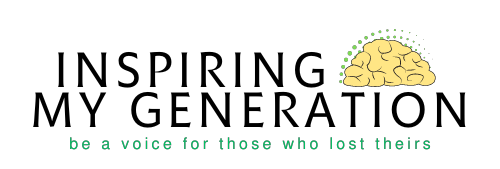Post-Traumatic Growth: Why I Stopped Measuring My Healing by Resilience
What does resiliency mean to you?
For a long time, I thought resiliency meant bouncing back immediately, without setbacks, without visible distress; almost like a superpower where nothing could knock me down.
But in this week’s episode of Normalize The Conversation, Dr. Victoria Grinman, reframed everything for me:
Resilience is simply getting back to baseline.
Healing isn’t measured by how quickly you return to “normal.” It’s measured by growth, and growth will look different at every stage of your journey.
I used to wonder what was wrong with me. If I’m truly “resilient,” as people often told me, why didn’t I feel resilient? Why wasn’t I bouncing back? I felt like I was taking one step forward and three steps back—constantly measuring my progress by how “normal” I could act. This was a mask, so no one would know I was still struggling. I thought maybe if I faked it well enough, I’d finally feel okay again. That I’d be “healed.”
But, I had to learn the hard way: Healing isn’t about going back to who you were before the trauma. Healing is about going through it, facing the pain, sitting in the struggle, and allowing space for growth.
That’s what Post-Traumatic Growth (PTG) is: It’s not the trauma itself that transforms us, but the struggle we move through afterward. PTG is about making meaning from pain, about rewriting the story you didn’t choose—one that doesn’t define you but does shape who you’re becoming.
After my trauma, I asked all the hard questions: Who am I now? Why did this happen? What is the point of it all?
And then came another truth—one that Dr. Grinman reinforced: You can’t rewrite your story without first taking care of the vessel that carries you through it. Your body. Your nervous system. Your breath.
Our bodies have a way of remembering what our minds try to forget. For me, trauma looked like unexplained fatigue. I held tension in my chest. I flinched when someone touched my arm. And for a long time, I was frustrated with myself. I was doing “everything right”—therapy, coping skills, self-care. So why couldn’t I move on?
What I didn’t understand was that healing couldn’t happen if my body was still stuck in survival mode.
I began tuning in to what my body was telling me. I started slowing down, noticing the signs, being gentle with myself, and incorporating somatic work. Finally, I felt the shift.
I stopped trying to return to a version of myself who no longer existed. Instead, I focused on becoming—and that changed everything.
I built deeper friendships. I opened my heart to love in the purest form. I gave myself permission to feel joy and create it in small, intentional ways. I began seeing myself not as someone barely surviving in the background, but as someone with a voice, a place, and a purpose.
And even now, I’m still rewriting my story. I’ve learned I don’t have to have it all figured out. I just need to start where I am, breathe through what I feel, listen to my body, and trust that growth is always possible.
So, if you're on your own healing journey, please remember this:
You don’t have to go back to who you were.
You get to become someone new.
That’s the most powerful healing story of all.
